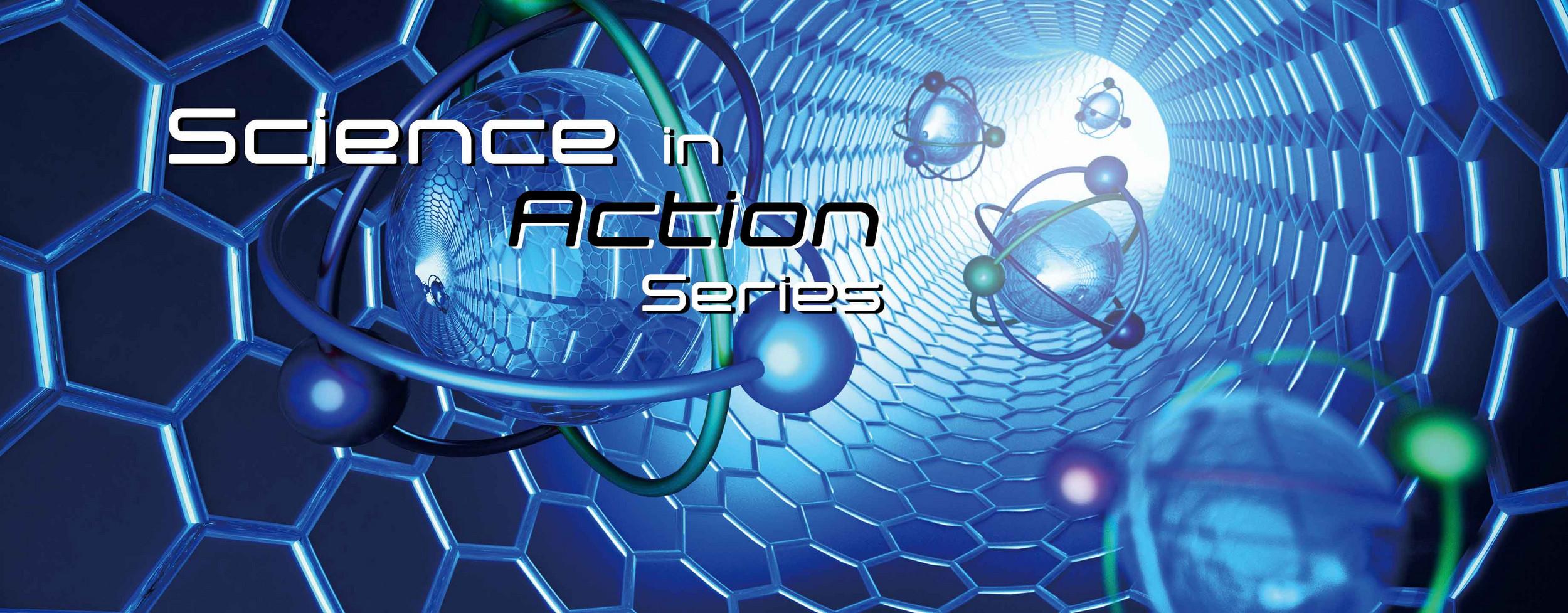
Large, land-based gas turbines are the worker bees behind energy production. These devices convert the heat from nuclear fuel, concentrated solar power and fossil fuels like coal and gas, into electricity.
Thermal energy generated by these sources heat up a working fluid, which converts heat into rotary motion of the turbines. That motion generates electricity for our power grid.
Researchers are looking at Supercritical Carbon Dioxide (sCO2) as a working fluid for a range of power generation applications. Supercritical CO2 works as a heat transfer fluid at a low critical temperature and pressure. It is a friendly and fully recyclable solvent, stable, recoverable through pressure reduction and is a potentially more efficient working fluid.
The real benefit of Supercritical CO2 is that it allows for much smaller turbo machinery.
Michael Lance 博士
But like other working fluids, Supercritical CO2 interacts on a molecular level with the turbine blades. It acts like both a gas and a liquid. Supercritical CO2 has many of the heat transfer properties of liquids. Corrosion and carbon ingress are two of them.
That’s where Michael Lance, Ph.D. comes in. He is a senior research and development scientist in Oak Ridge National Laboratory’s Materials Science and Technology Division.
His job is to analyze the compatibility of structural alloys used in these turbines submerged in Supercritical CO2. He wants to document the corrosion and carbon ingress of the alloys as it is exposed to the working fluid. And he wants to build a model to predict these situations based on the alloy’s composition under various environmental conditions.
“We're testing these well-known compositions, to see how they perform under these unique environments of temperature and pressure.
Lance uses using Glow Discharge Optical Emission Spectrometry (GD-OES) to characterize corrosion in super alloys and stainless steels. GD-OES is a technique to measure depth profiles of elements in a solid sample by detecting emissions from atoms in plasma by sputtering - by depositing metals on a surface by using fast ions to eject particles from a target.
The basis of GD-OES is the sputtering of the surface with an electric field-induced radio frequency plasma - or glow discharge - using low-pressure argon gas. The argon collides with the surface, sputtering atoms off the sample surface that then enter the plasma. The sputtered atoms collide with high-energy electrons and gas atoms and become excited.
These excited atoms de-excite by optical emission, releasing photons with energies that are characteristic of the atom. A grating disperses the optical emission that the spectrometer measures with photomultiplier tubes. The measured intensities are directly proportional to the number of sputtered atoms for each element.
The alloys are generally stainless steel compositions.
Lance said it’s easy to measure the X-Y dimensions, that is the surface of the alloys after undergoing exposure to the Supercritical CO2. But it’s the Z axis, the depth on the material, that is harder to study.
“For our modeling, what we're interested in is where these elements go. How are they diffusing as we expose them,” Lance said. “Most of the things are changing in the Z direction, in the depth. And that's what GD-OES allows us to measure. So it's very useful for looking at corrosion.”
Lance exposes these compounds to high temperatures in different atmospheres – pressures - and measures the depth profile.
“We can measure the oxide scale composition, but also of interest is within the metal beneath the corrosion,” Lance said. “The alloy can become depleted in elements that are forming the oxide scale at the surface.”
GD-OES is very useful for measuring that depth profile over a very large spot.
“We can average a lot of material and see very tiny changes that would be hard to see using other techniques,” he said.
Lance wants to quantify any potential alloy degradation. A specific concern for Supercritical CO2 environments is the ingress of carbon into the alloy, which researchers have observed for more than 50 years in both iron and nickel-based alloys. That can affect the longevity and performance of the turbines.
Oak Ridge National Laboratory is Tennessee-based science and technology center sponsored by the U.S. Department of Energy. A contractor, UT–Battelle administers, manages and operates the lab as a federally funded research and development center.
The lab has produced research for a variety of scientific efforts, from creating better crops to studies on nuclear fusion.
A key focus of Lance’s research is to measure the amount of carbon ingress as a function of time and temperature in order to predict long-term behavior. Long-term such as a 30-year lifetime for a concentrated solar power application.
“The problem is that the carbon dioxide (from the Supercritical CO2) will breakup at the surface of the alloy and the carbon from that will actually go into the alloy,” he said. “That can be very bad. It can embrittle the sample. So we are interested in understanding the carbon, what's called the carbon ingress.”
Other methods to characterize the corrosion have been tried. The electron microscope will create x-rays characteristic of the elements present. But it doesn’t work well with light elements like carbon.
That tends to cause the peaks to be weaker, which, which hurts the limit of detection. You can also get carbon contamination in the electron microscope. Researchers have used GD-OES to measure concentration depth profiles on corrosion samples for many years.
A HORIBA GD Profiler-2 at the Oak Ridge National Lab in Oak Ridge, Tennessee.
Lance’s work borders between basic and applied research, yielding results private entities incorporate into industrial designs. Funding for Lance’s program is through an applied program. His group is in close communication with industry.
“They're telling us what they're interested in, and where we're trying to fit their needs. We are considered to operate within the Department of Energy as applied science. However, for most people, for politicians, they will think of us as basic. So it depends on your perspective.”
The government funds other researchers at the lab through a line called basic energy sciences.
“They're really looking at pie-in-the sky things that won't work for certain,” Lance said. “Maybe somebody will use it 30-years from now. So we're much closer to what industry is currently interested in. Nevertheless, we're still more basic from industry's perspective.”
Lance works with a HORIBA GD-Profiler 2™ in his lab to perform depth analysis using GD-OES. It provides fast, simultaneous analysis and is an ideal tool for thin and thick films characterization and process studies.

Sie haben Fragen oder Wünsche? Nutzen Sie dieses Formular, um mit unseren Spezialisten in Kontakt zu treten.